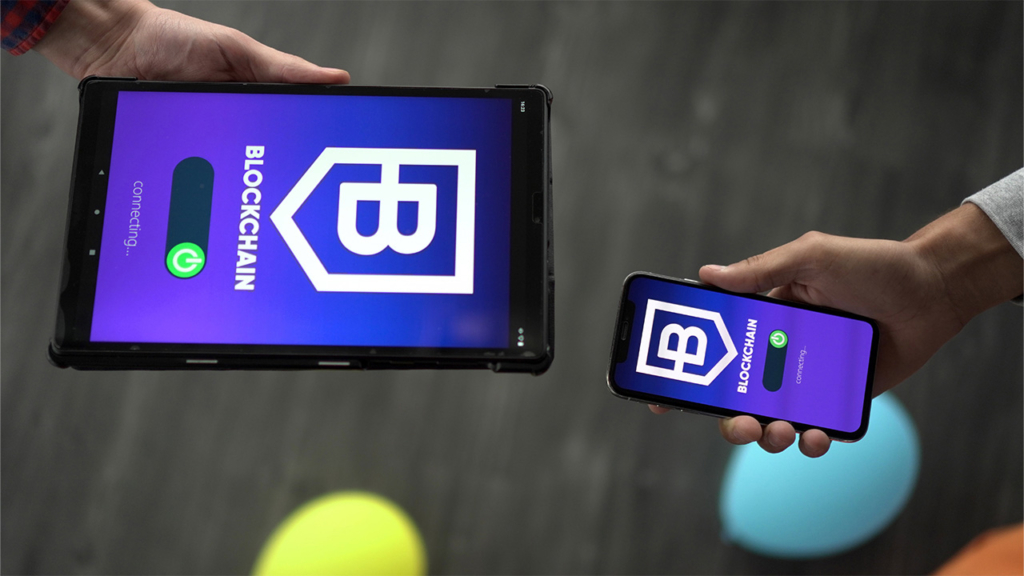Blockchain and cryptocurrencies are all the rage, with their many heady awarding possibilities. Merely they also come with a significant environmental impact, mainly related to energy use. This is the get-go part in a series where we explore the environmental considerations regarding blockchain engineering science.
What is blockchain?
Blockchain is a way to maintain and update a database, typically across a network of computers. New data is added ane ‘block’ at a fourth dimension, and each block refers back to the previous block. Each new block gets added to an existing chain of blocks, hence the name ‘blockchain’.
Blockchain technology works particularly well for cryptocurrencies. Once information becomes office of the blockchain, it cannot be deleted or changed. In addition, many blockchains are run in a decentralized manner, where data is stored and updated simultaneously across the network. This makes information technology next to impossible to tamper with since discrepancies between different versions will be identified quickly.
Reaching consensus
To ensure each new block of data added to the chain is legitimate, a consensus machinery is used that allows everyone on the network to check the legitimacy of every block. The near well-known and widely used consensus-reaching mechanism is called Proof of Piece of work (Pw): earning the correct to add together a block past doing a certain corporeality of computational work.
The people doing this work are called miners, because successfully calculation a new block to the blockchain generates some new amount of cryptocurrency that they are allowed to keep every bit a reward. In addition, miners are paid processing fees for the transactions in the block they added to the chain. These rewards are critical, since they incentivize the work needed to continue the blockchain operational.
Doing the piece of work
The ‘work’ in a Proof of Work organization commonly consists of solving a numerical puzzle: ane that is piece of cake to bank check, but difficult to solve. The just mode to come up up with the solution is by guessing once again and once more. Once someone finds a solution, they broadcast the new cake to the rest of the network. The other participants can easily check if the solution is indeed correct. Everyone then adds the block to their local re-create of the concatenation and the guessing game starts over again for the next cake.
The need for an upfront investment of computational power, and therefore free energy, makes it less attractive to endeavor to game the organization, and the luck factor involved in whoever completes their Proof of Work first makes it practically impossible to add fraudulent information to blocks.
Growing the network
The more computers are trying to solve the puzzles, the harder the system becomes to tamper with. If you want to introduce a faulty block to the chain, you have to observe a valid solution faster than anybody else and control a majority of the mining capacity under control, since everyone else in the network will check your solution. And even and so it’southward unlikely y’all’ll exist able to keep a fraudulent chain going for long. The larger the network, the harder it is to break and the better the security of the organization.

The big problem with blockchains and energy use
None of this explains why blockchains are energy guzzlers. That happens considering blockchains operate on the status that blocks tin can but exist added to the chain on a consistent fourth dimension interval, regardless of how many miners at that place are on the system. Roughly every 10 minutes on the Bitcoin blockchain and roughly every 15 seconds on the Ethereum blockchain. The reasons are complex, only the result is unproblematic: As more mining chapters joins the network, the Prisoner of war puzzles have to be made harder. This way, information technology still takes the same amount of time to solve them; information technology just takes more energy.
Endless growth and burden-shifting
In other words: computers joining the mining do non change the functionality of a blockchain, but merely increase its energy utilisation. The constabulary of diminishing returns plays a big role here. In one case a blockchain network reaches a critical number of nodes, security already meets a base requirement. But mining is lucrative, and more and more than people own cryptocurrency. Equally a result, the Bitcoin blockchain alone currently uses 204,five TWh of electricity per twelvemonth, comparable to the ability consumption of Thailand. And it’s the amount of energy used itself that is the problem, non the source of that energy. Many miners are switching to renewable free energy sources. But this just moves the problem elsewhere. We don’t nonetheless have enough renewable energy production to embrace all of our activities. So, if mining uses up renewable energy, that just increases the non-renewable energy used on other activities.
A look to the time to come
Mining is just profitable if the rewards you lot receive for adding a new block to the chain are worth more than you spend on the energy used for mining. If energy prices go downwards or cryptocurrency values ascent, the energy use of the blockchain will likely go upwards as mining becomes fifty-fifty more than attractive.
Fortunately, the energy utilisation upshot has been recognized and several alternatives to the Proof of Piece of work system take been adult. So far, these are non widely used. However, 1 of the largest cryptocurrency blockchains, Ether, is planning to move to a Proof of Stake system soon. This volition be covered in the next office of this serial on the environmental affect of the blockchain.
This was the start part of our serial on blockchain technology. In future parts, we’ll look into allocating the energy use of the blockchain amid its users to make up one’s mind who is responsible for the impact and discuss alternative consensus methods such equally Proof of Stake.
Source: https://pre-sustainability.com/articles/blockchain-and-our-planet-why-such-high-energy-use/
 RosyandBo.com Trusted Information and Education News Media
RosyandBo.com Trusted Information and Education News Media



